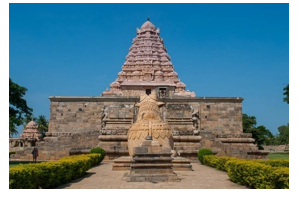

28th July 2025 (17 Topics)
Mains Issues
Context
A student in Balasore, Odisha died by self-immolation following inaction by the Internal Complaints Committee (ICC) on her sexual harassment complaint.
Structural and Legal Deficiencies in Enforcement of the POSH Act, 2013
Background and Legal Evolution of the ICC Mechanism
- Vishaka Guidelines (1997): Judicial Genesis
- Originated from the Vishaka v. State of Rajasthan
- Issued by the Supreme Court in the wake of Bhanwari Devi’s gang rape.
- Mandated complaint committees with gender balance and third-party representation.
- POSH Act, 2013: Codifying Workplace Safety
- Enacted post-Nirbhaya incident.
- Formally institutionalised the ICC for workplaces with 10 or more employees.
- Provided for Local Committees (LCs) at the district level for unorganised sector grievances.
Institutional Structure and Powers of the Internal Complaints Committee (ICC)
- Composition and Membership
- Headed by a senior woman employee (Presiding Officer).
- Two members with experience in social work/legal knowledge.
- One external member from an NGO or expert on sexual harassment.
- Minimum 50% representation of women is mandated.
- Jurisdiction and Timelines
- Complaints must be filed within three months of the incident.
- Inquiry to be completed within 90 days; findings to be acted upon in 60 days.
- Quasi-Judicial Powers
- ICC has powers equivalent to a civil court under the Civil Procedure Code.
- Confidentiality is legally mandated under Section 16 of the POSH Act.
- Employers are obligated to assist the aggrieved woman if she seeks to file a criminal case.
Implementation Deficit and Systemic Challenges
- Poor Compliance Across Institutions
- As of 2024, the Supreme Court observed significant non-compliance, both in private and public institutions.
- District Officers, tasked with monitoring and compiling annual reports, have failed to enforce accountability.
- Lack of Inter-Ministerial Coordination
- Ministry of Women and Child Development is nodal agency.
- However, Labour and Industry Ministries oversee workplaces—leading to fragmented accountability.
Way Forward: Institutional and Legal Reform
- Capacity Building of ICCs
- Mandatory training and certification for all ICC members.
- Inclusion of psychologists or trauma-informed professionals for sensitive handling.
- Robust Monitoring Mechanism
- Mandatory public disclosure of number of complaints filed, redressed, and pending.
- Annual compliance audits by District Officers with penalties for non-reporting.
- Strengthening Victim-Centric Redressal
- Provision for anonymous or third-party complaint filing mechanisms.
- Legal aid support and witness protection protocols for complainants.
- Technology Integration
- Centralised digital grievance redressal portal with tracking system and escalation mechanisms.

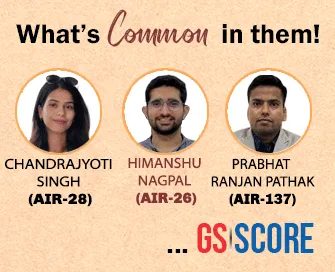
Mains Issues
Context
Eight pilgrims were killed and over 30 injured in a stampede at the Mansa Devi temple in Haridwar, Uttarakhand, on July 28, 2024.
Definition & Nature of a Stampede
- Stampede refers to a sudden, uncontrolled surge of a large crowd, often triggered by panic, fear, or excitement in congested spaces.
- A stampede becomes fatal when movement is restricted and pressure builds up, resulting in trampling or suffocation.
Key Causes of Stampedes
- Organizational Failures
- Inadequate Crowd Management: Absence of trained marshals or police supervision.
- Poor Planning: Lack of crowd modelling, emergency drills, or early warning systems.
- Communication Breakdown: No public announcement system or exit signage.
- Human Factors
- Panic/Fear: Often triggered by rumours, explosions, or fire
- Excitement/Euphoria: Seen during festivals, political rallies, or concerts.
- Aggression/Impatience: Linked to limited access, long queues, or poor crowd discipline.
- Infrastructure-Related Causes
- Overcrowding: Density exceeding 4-5 persons per square metre becomes dangerous.
- Poor Design: Narrow passageways, blocked exits, and lack of emergency escape routes.
- Adverse Conditions: Slippery terrain, low visibility, and staircases increase risk.
Impacts of Stampedes
- Human Costs
- Fatalities and Injuries: Severe fractures, internal injuries, and high death tolls.
- Psychological Trauma: Survivors often suffer from PTSD, panic attacks, or grief disorder.
- Economic and Infrastructure Loss
- Damage to public property, temporary structures, and religious or event infrastructure.
- Post-disaster expenditures on relief, rehabilitation, and structural upgrades.
- Administrative & Legal Fallout
- Investigations, judicial inquiries, and compensation claims.
- Demands for regulatory reforms, accountability, and standardised protocols for crowd events.
Stampede Incidents in India
- 2025 – Haridwar, Mansa Devi Temple: Panic triggered by a rumour about a snapped electric wire; led to chaos on a densely crowded stairway.
- 2025 – Bengaluru, Karnataka (RCB Final Celebration): Dozens injured during victory celebration of Royal Challengers Bengaluru at Brigade Road; crowd swelled beyond capacity, police overwhelmed.
- 2024 – Hathras, UP: Over 121 deaths due to lack of crowd control at a religious congregation.
- 2017 – Mumbai Station: 22 deaths during rush hour on an overcrowded footbridge.
- 2013 – Allahabad (Kumbh Mela): 36 deaths due to confusion over platform changes.
- 2008 – Naina Devi Temple, HP: 145 deaths after rumours of a landslide triggered panic.
- 2005 – Mandhardevi Temple, Maharashtra: Over 265 deaths during pilgrimage overcrowding.
NDMA Guidelines to Control Stampedes: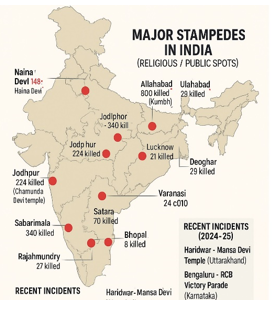
- Infrastructure Development: Ensure wide, safe pathways and adequate open spaces to accommodate large crowds, especially in high-risk areas.
- Route Segregation: Separate routes for normal, emergency, and express flows reduce congestion and aid vulnerable groups like children and elderly.
- Panic Management: Rapid response by trained staff is essential to defuse panic from triggers like rumors, loud sounds, or sudden movements.
- Community-Based Crowd Control: Emphasizes communication, cooperation, and volunteer involvement over force to manage public gatherings.
- Demand Management: Uses data on crowd trends, peak timings, and advance registration to regulate crowd inflow and avoid surges.
- Fire Safety: Enforces safe electrical setups and cautious use of LPG and fireworks to prevent secondary disasters during events.
Way Forward
- Use of Technology: Drone monitoring, AI-based crowd density estimation, mobile alerts.
- Urban Planning: Venue certification based on capacity, emergency pathways.
- Legal Measures: Enforcing Model Guidelines for Crowd Management (MHA, 2016) and NDMA guidelines.
- Training & Simulation: Mandatory mock drills before mass gatherings.
- Public Awareness: Clear signage, communication channels, and citizen participation.


Mains Issues
Context
On July 8, 2025, a Glacial Lake Outburst Flood (GLOF) originating in Tibet caused devastation in Nepal, highlighting transboundary vulnerabilities and climate-induced risks in the Himalayas.
Understanding GLOFs and Their Triggers
- What is a GLOF?
- A Glacial Lake Outburst Flood (GLOF) is a sudden release of water from a glacial lake due to dam failure, often leading to catastrophic downstream flooding.
- Types of Glacial Lakes in the Himalayas
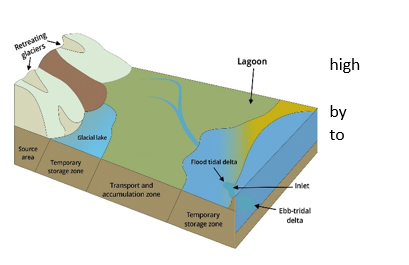
-
- Supraglacial Lakes: Formed on glaciers; prone to melting during high summer temperatures.
- Moraine-Dammed Lakes: Blocked by loose sediment or ice; vulnerable to sudden collapse due to structural weakness.
- Major Triggers
- Ice or rock avalanches, Earthquakes, Excessive glacial meltwater pressure, Landslides into glacial lakes etc.
GLOF Impacts in Nepal and the Himalayas
- July 2025 Event
- Washed away a China-built bridge on the Lende River in Nepal
- Damaged four hydroelectric plants, cutting off ~8% of Nepal’s power supply
- Lack of early warning from China cited by Nepalese officials
- Previous GLOF Incidents in Nepal
- Solukhumbu (2024), Mustang (2025), Humla (2025)
- Historical Cases: Cirenma Co (1981), Dig Tsho (1985), Tama Pokhari (1998)
- Demonstrates a repeated pattern of high vulnerability without transboundary alert mechanisms
India’s GLOF Vulnerability
- Geographic Exposure
- 28,000+ glacial lakes in Indian Himalayan Region (IHR)
- Over 7,500 lakes above 4,500m; inaccessible for most of the year
- Risk hotspots: Sikkim, Uttarakhand, Himachal Pradesh, Ladakh, Arunachal Pradesh
- Recent Incidents
- Sikkim (2023): South Lhonak GLOF damaged the $2 billion Chungthang Dam
- Kedarnath (2013): Chorabari lake outburst, compounded by cloudbursts and landslides — caused massive devastation
- Environmental and Infrastructure Risks
- Riverbed siltation (Teesta), dam failures, and displacement of communities
- Increased frequency due to record global temperatures (2023–2024 were hottest years globally)
India’s National Response and Mitigation Strategy
- NDMA & CoDRR Initiatives
- Shift from reactive to proactive disaster risk reduction
- Committee on Disaster Risk Reduction (CoDRR) formulated a national strategy
- Key Features of the National Programme
- $20 million initiative for 195 at-risk glacial lakes
- Risk categorized in four levels
- Five-fold objectives:
- Hazard Assessment
- Automated Weather and Water Stations (AWWS)
- Early Warning Systems (EWS)
- Risk Mitigation (e.g., drawdown channels, retention walls)
- Community Engagement
- Use of Technology
- Synthetic Aperture Radar (SAR) Interferometry: Detects micro-changes in slope stability
- Electrical Resistivity Tomography (ERT): Assesses moraine dam integrity
- UAVs and Bathymetric Surveys: Determine lake volume and topography
- Field Implementation
- Expeditions to 40 high-risk lakes in 2024
- Local communities engaged to ensure cultural and ecological sensitivities are respected
- Monitoring stations in Sikkim providing near real-time lake data every 10 minutes
Challenges Identified
- Lack of Transboundary Early Warning: No formal mechanism with China despite repeated cross-border GLOFs
- Data Deficiency: Inadequate monitoring stations; surveys possible only in brief summer window
- Technological Gaps: Limited indigenous innovation and underutilisation of advanced geospatial tools
- Community Disconnect: Cultural resistance and inadequate awareness among local populations
Way Forward
- Bilateral/Regional Cooperation: Formalise early warning agreements with China, Nepal, and Bhutan through multilateral platforms (e.g., BIMSTEC, SCO)
- Technological Investment: Expand use of SAR, UAVs, EWS and geospatial modelling tools in IHR
- Local Capacity Building: Involve local communities, NGOs, and mountaineering institutions in field surveillance
- Policy Integration: Align glacial risk mapping with national climate adaptation and infrastructure planning
- Cryosphere Research Funding: Support Indian R&D institutions for long-term climate-glacier-disaster research synergy


Prelims Articles
Context
The indigenous Sohrai mural tradition from Jharkhand was showcased at the Kala Utsav 2025 – Artists in Residence Programme, held at Rashtrapati Bhavan.
Sohrai Art:
- Sohrai is a ritualistic and seasonal wall-painting tradition practised primarily by tribal communities—particularly the Oraon, Munda, and Santhal tribes—of Jharkhand, especially in the Hazaribagh region.
- It is executed mostly by women during the harvest and festive seasons and is deeply rooted in agrarian rituals and nature worship.
Techniques and Materials:
- Sohrai paintings are created on mud walls using natural earth pigments (red ochre, white kaolin, black manganese) and simple bamboo brushes.
- The designs include animals, plants, birds, and geometric patterns, symbolising fertility, prosperity, and the spiritual bond between humans and nature.
Institutional Support and National Recognition:
- The Indira Gandhi National Centre for the Arts (IGNCA) and its Regional Centre in Ranchi played a vital role in coordinating the participation of ten traditional women artists from Jharkhand.
- This recognition at Rashtrapati Bhavan marks a cultural milestone for the lesser-known Sohrai art form, often overshadowed by other tribal arts like Mithila, Warli, and Gond.


Prelims Articles
Context
Prime Minister Narendra Modi addressed devotees during the Aadi Thiruvathirai Festival at Gangaikonda Cholapuram, commemorating 1000 years of the Brihadeshwara Temple and the Chola Empire's legacy.
Gangaikonda Cholapuram
Historical Background
- Founded by: Rajendra Chola I (son of Rajaraja Chola I) in 1025 CE.
- Reason for establishme2`nt: To commemorate his successful northern military campaign up to the Ganges River.
- Symbolic gesture: Brought Ganga water and poured it into a reservoir — Chola Gangam — as a mark of conquest.
Political Importance
- Capital of the Chola Empire: 1025–1279 CE.
- Controlled a vast territory — from the Tungabhadra river in the north to Sri Lanka in the south.
- Served as a strategic centre for administration, military command, trade, and culture.
- Palace known as Chola-Keralan Thirumaaligai (per Vira Rajendra’s inscriptions) — emphasized pan-regional rule.
Architectural Features
- Gangaikonda Cholisvaram Temple:
- Built in Dravidian architectural style.
- Modeled after Brihadisvara Temple at Thanjavur, but graceful and intricate rather than massive and bold.
- Unique Features:
- Jalasthambam or “Liquid Pillar of Victory”
- Exquisite stone carvings, refined vimana (temple tower).
- Sculptures of Nataraja, Chandesanugrahamurti, and Ardhanarishvara display Chola artistic finesse.
- Recognized as a UNESCO World Heritage Site under the “Great Living Chola Temples”.
Epigraphic & Literary Sources
- Tiruvalangadu Copper Plates: Record Rajendra’s northern expedition and the founding of the city.
- Karanthai Plates, Kalingattuparani, Muvar Ula: Literary texts and inscriptions detail the grandeur and cosmopolitan nature of the capital.
Cultural Significance
- A hub for Tamil literature, Shaivism, temple rituals, and royal patronage of the arts.
- Centre for Chola bronze sculpture tradition and religious syncretism.
- Reinforced divine kingship and temple-centered administration.
|
Aadi Thiruvathirai (also known as Aadi Ardra)
|


Prelims Articles
Context
Prime Minister Narendra Modi, during his visit to the Brihadeeswara Temple at Gangaikonda Cholapuram on July 27, 2025, highlighted the Chola Empire's early democratic practices, notably the "Kudavolai" system of ballot-based elections.
Historical Governance Mechanism:
- The Cholas, especially under Rajendra Chola I, developed an advanced form of local self-government that predates many Western democratic models. This system was institutionalized through Uttaramerur inscriptions, which codified rules for local administrative councils.
Kudavolai System ("Ballot Pot Election"):
- The process was not symbolic but regulated and merit-based. Names of eligible candidates (landowners, tax-payers aged 35–70 years with Vedic knowledge) were written on palm leaves and placed in a pot (kudam). The draw was supervised and based on civic trust and transparency.
Eligibility & Disqualification Criteria:
- Candidates had to be free from debt, criminal charges, alcohol abuse, and close kinship with sitting officials. These stringent norms ensured moral rectitude in public service, which resonates with modern disqualification laws under Representation of the People Act, 1951.
Accountability Framework:
- Annual audits and removal for misappropriation or dereliction of duty were standard. This showcases early checks and balances akin to modern anti-corruption and Right to Recall
Civic Engineering & Institutional Legacy:
- The Chola model facilitated merchant guilds (Manigramam, Ayyavole), decentralised decision-making, and trade diplomacy. It influenced subsequent administrative thought in peninsular India and remains archaeologically and epigraphically documented, especially in Epigraphia Indica Vol. XXII (1933–34).


Prelims Articles
Context
The Union Minister for Rural Development launched the Bima Sakhi Yojana in partnership with LIC to promote rural insurance penetration and women-led economic empowerment.
Bima Sakhi Yojana
Scheme Overview:
- Bima Sakhi Yojana is a social security initiative under the Ministry of Rural Development (MoRD) in collaboration with LIC (Life Insurance Corporation of India).
- It falls under the ambit of the National Rural Livelihoods Mission (NRLM) and aims to realise the government’s vision of “Insurance for All by 2047.”
Key Features:
- Trained Self-Help Group (SHG) women will be appointed as Bima Sakhis at the Gram Panchayat level.
- These women will act as last-mile facilitators of insurance enrolment, renewal, and claim assistance.
- It integrates with existing rural insurance schemes and targets economically vulnerable populations.
Objectives:
- To enhance insurance penetration in rural and semi-urban India.
- To empower women through financial inclusion and entrepreneurship.
- To strengthen the Lakhpati Didi Mission, with the target of creating 2 crore Lakhpati Didis by 15 August 2025.


Prelims Articles
Context
The Draft Digital Personal Data Protection Rules, 2025, received 6,915 inputs from citizens and stakeholders during public consultation, as part of the government's effort to operationalize the DPDP Act, 2023.
Digital Personal Data Protection (DPDP) Act, 2023:
- It is enacted to regulate processing of digital personal data while protecting individual privacy rights.
- It applies to Data Fiduciaries (govt/private entities) and introduces consent-based processing.
- It replaces older IT Rules, bringing India in line with global norms like EU’s GDPR.
Draft DPDP Rules, 2025:
- Public consultation yielded 6,915 inputs, indicating wide stakeholder engagement.
- Rules will define implementation aspects: grievance redressal, notice formats, penalties, etc.
Key measures taken by government to strengthen cybersecurity are as follows:
- Indian Computer Emergency Response Team (CERT-In): Nodal agency under Section 70B of the IT Act, 2000 for cyber incident response.
- National Cyber Coordination Centre (NCCC): Coordinates real-time cyber threat intelligence among stakeholders.
- Cyber Swachhta Kendra (CSK): Botnet cleaning and malware analysis centre providing tools to users.
- CyberShakti Programme (2024):: Focused on training women in cybersecurity to build inclusive digital capacity.
Strategic Significance:
- Ensures cyber-sovereignty, data localization compliance, and reduced foreign dependency.
- Strengthens citizen trust in digital public infrastructure like DigiLocker, Aadhaar, and UPI.
|
PYQ: Q. In India, the term "Public Key Infrastructure" is used in the context of (2017) (a) Digital security infrastructure (b) Food security infrastructure (c) Health care and education infrastructure (d) Telecommunication and transportation infrastructure |


Prelims Articles
Context
Indian Railways has successfully conducted trial tests of India’s first hydrogen-powered coach at the Integral Coach Factory (ICF), Chennai, marking a critical step towards sustainable rail transport.
India’s First Hydrogen Train:
- India’s hydrogen-powered train coach is part of a green initiative to decarbonize railway operations by shifting from diesel to hydrogen fuel cell-based propulsion. The coach was tested at ICF, Chennai, and the full project is being implemented by the Northern Railway zone.
Key Features and Technical Aspects:
- Two 1600-HP diesel power cars converted to hydrogen fuel cell-powered cars.
- A 10-coach DEMU rake will be powered with these units.
- The train can carry over 2,600 passengers and will have zero tailpipe emissions.
- The hydrogen will be stored in cylinders at 350 bar pressure.
Hydrogen Fuel Technology:
- Hydrogen acts as a clean fuel with only water as a by-product.
- Hydrogen fuel cells produce electricity through electrochemical reactions (no combustion).
- Hydrogen is stored in high-pressure tanks and fed into fuel cells onboard the train.
Associated Infrastructure:
- A refuelling and storage facility is being set up at Jind, Haryana.
- Storage capacity: 3,000 kg of hydrogen, divided into low-pressure (2,320 kg) and high-pressure (680 kg) zones.
Design and Safety Standards:
- Coach design approved by RDSO.
- Safety compliance includes CFD simulations to assess blast and leakage risks.
- Alignment with PESO and DPIIT standards for gas storage and transport.
Benefits and Strategic Impact:
- Reduction in carbon footprint and fossil fuel dependency.
- Advancement towards National Green Hydrogen Mission goals.
- Promotes India's commitment under the Paris Agreement.
- Potential for future exports and global leadership in hydrogen-based rail transport.
|
Q. With reference to fuel cells in which hydrogen-rich fuel and oxygen are used to generate electricity, consider the following statements: (2020)
Which of the statements given above is/are correct? (a) 1 only (b) 1 and 2 only (c) 3 only (d) 1, 2 and 3 |


Prelims Articles
Context
In the wake of intensified climate-related disasters, Indian states like Nagaland have adopted parametric insurance to finance rapid disaster relief using predefined climate thresholds.
Definition and Core Mechanism:
- Parametric insurance is a non-traditional insurance model that provides payouts automatically when a predefined threshold of a measurable event is breached (e.g., rainfall, temperature, wind speed, seismic activity).
- Unlike indemnity-based models, parametric insurance does not require post-disaster damage assessment, significantly reducing claim-processing time.
Trigger and Verification Mechanism:
- Thresholds are based on independently verified datasets from agencies such as the India Meteorological Department (IMD), NASA MERRA, and other accredited global or national data sources.
- Payouts are processed automatically upon data confirmation of a threshold breach.
Application Sectors:
- Agriculture: Protects small-holder farmers from losses due to droughts, rainfall deficits, or extreme temperatures.
- Renewable Energy: Solar firms link payouts to solar irradiance data for compensation against low productivity.


Prelims Articles
Context
Researchers at the California Institute of Technology (Caltech) have developed the world’s fastest single-shot microscope capable of real-time imaging of Brownian motion at the angstrom scale.
Brownian Motion – Conceptual Basis:
- First explained by Albert Einstein in 1905, Brownian motion refers to the random movement of particles suspended in a fluid, resulting from collisions with surrounding fast-moving molecules.
- It serves as foundational evidence for the existence of atoms and molecules.
Breakthrough Imaging Technology by Caltech:
- Developed a non-intrusive, real-time imaging technique capable of molecular sizing down to the tens of angstroms (1 Å = 10?¹? m).
- The method utilizes the stochastic nature of Brownian motion to measure molecular properties.
- The system captures images at hundreds of billions of frames per second, enabling observation of molecular interactions in ultrafast timescales.
Key Technological Components:
- Digital Micromirror Device (DMD): Used to manipulate and shape the light beam using programmable micromirrors.
- Streak Camera: Converts photons into electrons and captures their temporal spread to infer particle sizes.
- Ultrashort Laser Pulses: Similar to those used in LASIK, enabling precise light-sheet imaging within fluid mediums.
Applications:
- Biomedical Research: Enables in-situ analysis of molecular-scale processes relevant to disease mechanisms and drug interactions.
- Nanotechnology & Material Science: Supports real-time tracking of nanoparticles, especially in turbulent or gas environments such as flames.
- Non-intrusive Imaging: Overcomes limitations of conventional microscopy (e.g., invasive techniques, limited field of view, sample damage).


Prelims Articles
Context
The NASA-ISRO Synthetic Aperture Radar (NISAR) satellite is scheduled for launch on 30th July 2025 from Sriharikota aboard GSLV-F16, marking India’s first Earth observation mission with the United States.
NISAR (NASA-ISRO Synthetic Aperture Radar):
- It is the first joint Earth observation satellite mission between the Indian Space Research Organisation (ISRO) and the National Aeronautics and Space Administration (NASA).
Launch Details:
- Launch Date: 30 July 2025
- Launch Vehicle: GSLV-F16 (first time a GSLV is being used for sun-synchronous orbit)
- Launch Site: Satish Dhawan Space Centre, Sriharikota
- Orbit: Sun-synchronous polar orbit
- Satellite Mass: 2,392 kg
Key Technological Features:
- Dual-frequency radar system (L-Band by NASA, S-Band by ISRO)
- Uses SweepSAR technology for high-resolution, day-and-night, all-weather imaging
- Imaging swath: 242 km
- Revisit cycle: 12 days
Applications and Global Relevance:
- Monitoring of ecosystem disturbances, glacier dynamics, soil moisture, crop patterns, and urban expansion
- Tracking of earthquakes, tsunamis, volcanic activity, landslides, sea-level rise, and storm surges
- Will provide critical real-time data for climate resilience, agricultural planning, and disaster mitigation
- All data to be made freely accessible within 1–2 days, and near real-time during disasters


Prelims Articles
Context
The 14th edition of Exercise Bold Kurukshetra between the Indian Army and Singapore Armed Forces began on 27 July 2025 at Jodhpur, Rajasthan.
Exercise Overview:
- Exercise Bold Kurukshetra is a bilateral joint military exercise conducted between India and Singapore.
- Initiated in 2005, this is the 14th edition, held from 27 July to 04 August 2025.
- The current format includes a Table Top Exercise (TTX) and a Computer-Based Wargame (CBWG), focusing on mechanised warfare under UN mandate scenarios.
Strategic and Tactical Objectives:
- Enhances interoperability between mechanised units of both countries.
- Facilitates joint training, development of standard operating procedures (SOPs), and combat preparedness in multilateral peacekeeping operations under the UN Charter.
- Builds military-to-military confidence and deepens strategic cooperation in the Indo-Pacific framework.
Geopolitical Significance:
- Exercise Bold Kurukshetra reflects India’s Act East Policy and its commitment to rules-based regional order in Southeast Asia.
- Complements other India–Singapore defence engagements like SIMBEX (naval) and Agni Warrior (artillery)
- Strengthens bilateral defence diplomacy, which is guided by the India–Singapore Defence Cooperation Agreement (renewed in 2015).


Prelims Articles
Context
A new report titled “Unmaking Citizens” by NLSIU and Queen Mary University (London) has raised serious concerns over the functioning of Assam’s Foreigners’ Tribunals, alleging systematic procedural violations and constitutional infractions in citizenship adjudication.
Foreigners’ Tribunals (FTs) – Legal and Institutional Background:
- Foreigners’ Tribunals in Assam function under the Foreigners (Tribunals) Order, 1964, issued under the Foreigners Act, 1946.
- These are quasi-judicial bodies empowered to determine whether a person residing in India is a foreigner, particularly in Assam.
Key Findings of the “Unmaking Citizens” Report (2025):
- As of 2025, approximately 1.66 lakh individuals have been declared ‘foreigners’ by these tribunals.
- The report analyzed over 1,200 Gauhati High Court orders and found systematic arbitrariness, such as:
- Rejection of valid oral and documentary evidence
- Absence of uniform evidentiary standards
- Lack of procedural safeguards
- Over 85,000 cases are pending, with millions of appeals from NRC-excluded individuals anticipated.


Editorials
Context
Senior Advocate Indira Jaising, appointed amicus curiae, submitted to the Supreme Court that consensual sexual relationships between adolescents aged 16–18 should not be criminalised under the POCSO Act, 2012, urging a nuanced interpretation to prevent misuse.
- Age of Consent under POCSO: The Protection of Children from Sexual Offences (POCSO) Act, 2012 defines a “child” as anyone below the age of 18; hence, any sexual act with a person under 18 is considered non-consensual and criminal, regardless of mutual agreement.
- Conflict with Adolescent Behaviour: Judicial observations and rights-based critiques highlight that criminalising consensual relationships among adolescents aged 16–18 leads to unjust prosecutions and social stigma, despite absence of exploitative intent.
- Stringent Provisions in Place: Under Section 6 of the POCSO Act and aligned provisions in the IPC, BNS, and the Prohibition of Child Marriage Act, 2006, penetrative sexual assault on any minor attracts severe penalties, with no current legal scope for exceptions in consensual adolescent cases.
Judicial and Legal Interventions
- Supreme Court Review in Progress: The petition by Advocate Nipun Saxena and the submissions by Indira Jaising call for an exception for consensual sexual activity between 16–18-year-olds to be read into POCSO and Section 63 of the BNS.
- Madras High Court Precedent: In Vijayalakshmi v. State Rep. (2021), the Madras High Court proposed a safeguard by recommending that the age gap between the partners be no more than five years, to prevent predatory relationships disguised as consensual.
- Law Commission’s 2023 Stand: The Law Commission opposed changing the age of consent but endorsed “guided judicial discretion” during sentencing to differentiate between exploitative conduct and non-exploitative adolescent intimacy.
Way Forward and Policy Concerns
- Need for Legal Nuance: An exception clause for consensual acts between adolescents aged 16–18 would protect individual rights while upholding the protective objectives of POCSO, ensuring genuine cases of abuse are not diluted.
- Education and Sensitisation Imperative: Comprehensive adolescent sex education and legal awareness initiatives must be implemented to inform youth about the implications of the law and the concept of consent.
- Preventing Misuse and Judicial Overreach: Blanket criminalisation risks undermining judicial efficiency and harming young individuals emotionally and socially; hence, judicial discretion must be codified with safeguards to prevent arbitrary outcomes.
Practice Question:
"In light of evolving adolescent rights and judicial observations, critically examine the challenges posed by the uniform age of consent under the POCSO Act, 2012. Suggest a legally sound framework to reconcile child protection with adolescent autonomy." (250 words)


Editorials
Context
France has announced its intent to officially recognise the State of Palestine in September 2025, signalling a shift in Western diplomatic stance amidst the Gaza war and humanitarian crisis.
Evolving Diplomatic Landscape
- Global Support for Statehood: Out of 193 UN member states, 147—including India, China, and Russia—have already recognised Palestinian statehood, reflecting wide international support beyond the West.
- Shift in European Position Post-Gaza War: Since the October 2023 escalation in Gaza, European nations such as Spain, Ireland, Norway, and Slovenia have moved toward formal recognition of Palestine, challenging long-standing Western hesitation.
- France’s Strategic Breakthrough: If implemented, France would become the first G-7 nation to recognise Palestine, marking a strategic and symbolic departure from traditional Western alignment with Israeli policies.
Humanitarian Crisis and Global Response
- Scale of Humanitarian Devastation: In just 21 months, Gaza has witnessed over 60,000 deaths—constituting 2.5% of its population—alongside mass displacement and starvation, particularly among children.
- Israeli Policy and International Alarm: Statements by Israeli ministers threatening ethnic cleansing and annexation of Palestinian territories have provoked rare public condemnation from key allies such as Britain, Canada, and France.
- Insufficient Tactical Pauses: Israel’s announcement of limited “tactical pauses” in its military operations has not alleviated the humanitarian crisis; full cessation of hostilities and unrestricted aid access remain unmet imperatives.
Path Forward and Geopolitical Imperatives
- Recognition as a Political Catalyst: Formal recognition of Palestinian statehood is a foundational step toward a durable two-state solution and must be accompanied by structural peace negotiations.
- France’s Role in Recalibrating Western Diplomacy: France’s move is both a signal of strategic autonomy within the West and a challenge to U.S. inertia under the Trump presidency, which has shown reluctance to pressure Israel.
- Call for Broader Western Alignment: The international community—especially Western powers—must act collectively not only to end the ongoing violence but also to institutionalise mechanisms preventing future humanitarian catastrophes akin to the Nakba.
Practice Question:
"In light of recent shifts in European policy, critically evaluate the implications of France’s recognition of Palestinian statehood on the Israel-Palestine conflict and broader geopolitics in West Asia. What role should India play in supporting a just and peaceful resolution?" (250 words)

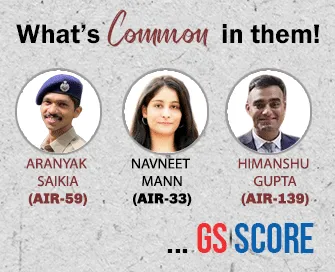
Editorials
Context
The US Court of International Trade ruled that tariffs imposed using the International Emergency Economic Powers Act (IEEPA) exceeded executive authority, adding further uncertainty to global trade dynamics.
Judicial Ruling and Tariff Uncertainty
- USCIT’s Landmark Judgment: The US Court of International Trade (USCIT) ruled that tariffs imposed using the IEEPA exceeded executive authority, as the law requires a declared state of emergency and a convincing nexus to the emergency condition.
- Tariff Appeals Underway: While the court decision targeted IEEPA-based tariffs, Section 301 tariffs—extended under the Biden administration—remain intact, and the US government is likely to escalate the matter to the Supreme Court.
- Scope of Section 232 and Beyond: Section 232 tariffs on global imports of steel, aluminum, and auto parts (justified under national security) continue to pose trade frictions, particularly in US–EU and US–Asia trade relations.
Economic Consequences and Policy Tools
- Tariff Escalations on Chinese Goods: Tariffs on Chinese imports have been raised up to 50% under Section 301, targeting semiconductors, batteries, and electric vehicles, indicating a clear strategic pivot towards tech and manufacturing protectionism.
- Reverberations on Global Supply Chains: Countries such as Vietnam, Indonesia, and even India face collateral damage due to redirected trade and tariff arbitrage; nations with ongoing trade negotiations with the US (like Japan, EU) remain partially shielded.
- Limited Effectiveness of Trade Deals: Even as bilateral deals continue, their ability to offset broader tariff risks is minimal due to overlapping unilateral US instruments like Section 301, 232, and 122, which can override conventional trade concessions.
Strategic Challenges and Forward Planning
- Unpredictability of US Trade Policy: The use of multiple overlapping legal tools—IEEPA, Section 301, 232, and 122—makes US tariff policy highly unpredictable, diminishing the strategic value of trade agreements.
- Implications for India’s Export Strategy: India, currently in negotiations with the US, must prepare for the limited efficacy of any trade deal by reinforcing its domestic manufacturing and market diversification to absorb external shocks.
- Need for Long-Term Resilience: Countries must align their export strategies with global volatility in mind, prioritising flexible tariff responses, dispute resolution capacities, and domestic reforms to remain globally competitive.
Practice Question:
"In light of recent US court rulings and tariff escalations, critically examine the impact of unilateral trade measures on global economic stability. How should India recalibrate its trade and tariff strategy to safeguard long-term interests?" (250 words)


